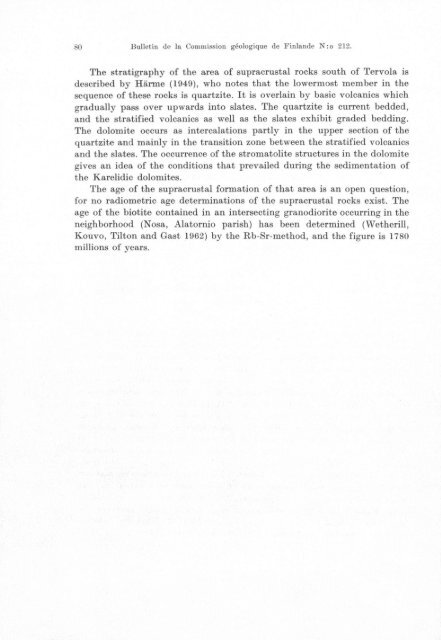COMMISSION GEOLOGIOUE - Arkisto.gsf.fi
COMMISSION GEOLOGIOUE - Arkisto.gsf.fi
COMMISSION GEOLOGIOUE - Arkisto.gsf.fi
You also want an ePaper? Increase the reach of your titles
YUMPU automatically turns print PDFs into web optimized ePapers that Google loves.
80 Bulletin de la Commission geologique de Finlande N: 0 212.<br />
The stratigraphy of the area of supracrustal rocks south of Tervola is<br />
described by Härme (1949), who notes that the lowermost member in the<br />
sequence of these rocks is quartzite. It is overlain by basic volcanics which<br />
graduaIly pass over upwards into slates. The quartzite is current bedded,<br />
and the strati<strong>fi</strong>ed volcanics as weIl as the slates exhibit graded bedding.<br />
The dolomite occurs as intercalations partly in the upper section of the<br />
quartzite and mainly in the transition zone between the strati<strong>fi</strong>ed volcanics<br />
and the slates. The occurrenee of the stromatolite structures in the dolomite<br />
gives an idea of the eonditions that prevailed during the sedimentation of<br />
the Karelidie dolomites.<br />
The age of the supraerustal formation of that area is an open question,<br />
for no radiometrie age determinations of the supracrustal roeks exist. The<br />
age of the biotite eontained in an interseeting granodiorite oeeurring in the<br />
neighborhood (Nosa, Alatornio parish) has been determined (Wetherill,<br />
Kouvo, Tilton and Gast 1962) by the Rb-Sr-method, and the <strong>fi</strong>gure is 1780<br />
millions of years.
















